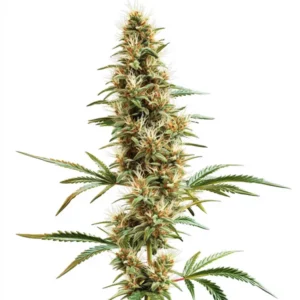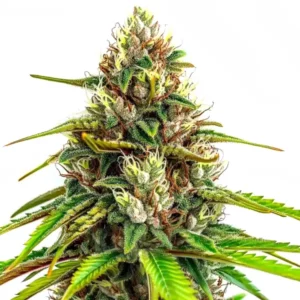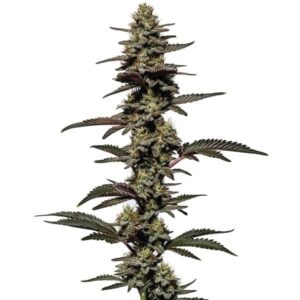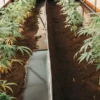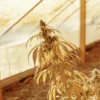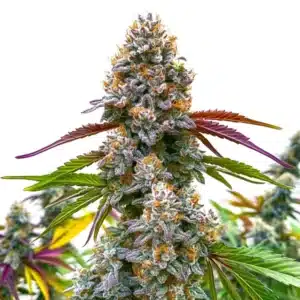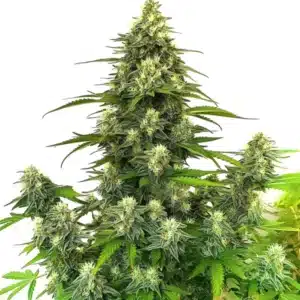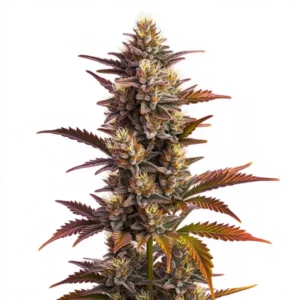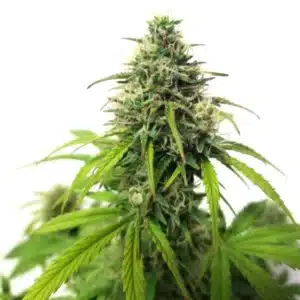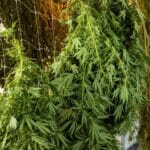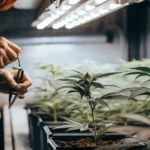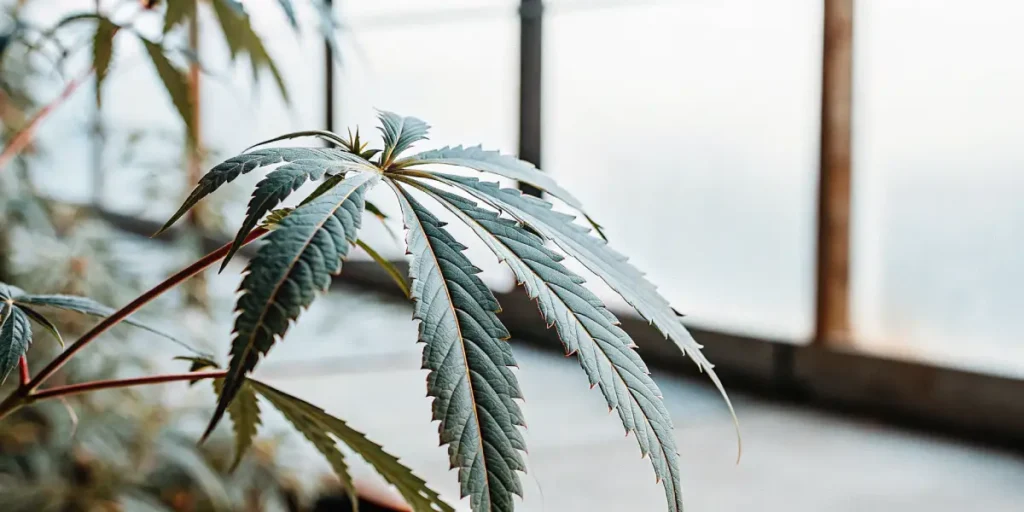
Cannabis Leaf Curling and Wilting
Cannabis cultivation can present a myriad of challenges, with leaf curling and wilting being among the most common issues. For both first-time growers and seasoned veterans, witnessing your cannabis leaves curling or wilting can be alarming. This condition, often a signal that something is amiss, demands immediate attention to ensure the health of your plants.
Leaf curling and wilting can stem from various factors, from nutrient deficiencies to environmental stresses. Addressing these issues promptly not only saves your current crop but also boosts your confidence as a grower. Knowing the causes of cannabis leaf curling and wilting is the first step to keeping your plants vibrant and thriving.
Recommended Strains
2046 Fast Version
-
THC: 20% - 26%
-
Type of seed: Fast Flowering
-
Phenotype: 80% Sativa / 20% Indica
-
Flavor: Earthy, Woody
-
Day to flower: 8 - 10 weeks
24k Gold Autoflower
-
THC: 18% - 24%
-
Type of seed: Autoflowering
-
Phenotype: 60% Sativa / 40% Indica
-
Flavor: Citrus, Fruity, Sweet
-
Life cycle of: 8 - 10 weeks
For those seeking a reliable strain that withstands common growing challenges, consider strains like Auto Gorilla Glue 4 from Blimburn Seeds. This strain is known for its resilience, making it a favorite among growers facing environmental challenges.
Common Causes of Cannabis Leaf Curling and Wilting
Several factors can lead to cannabis leaf curling and wilting. Identifying these can prevent the problem from escalating. Environmental factors affecting cannabis leaf health include temperature fluctuations, humidity levels, and light intensity. These factors can stress the plant, leading to the curling and wilting of leaves.
Nutrient imbalance is another major culprit. When a cannabis plant doesn’t receive the right nutrients in the correct ratios, it can lead to nutrient burn or deficiencies. Both manifest in leaf curling or wilting, indicating the plant’s struggle to maintain its health. It’s vital to understand the specific needs of your chosen cannabis strain to avoid such issues.
It’s also important to note that overwatering can lead to root rot, which starves the plant of oxygen, causing cannabis leaf curling and wilting. Ensuring your pots have proper drainage can mitigate this risk. Additionally, pest infestations can cause physical damage to leaves, making it essential to regularly inspect plants for signs of pests and take immediate action if detected.
Another lesser-known cause of cannabis leaf curling and wilting is the stress induced by transplanting. Plants that are moved into new environments may exhibit signs of shock, including leaf curling. To minimize this, ensure that the transition is smooth and that the new environment closely matches the previous one in terms of temperature and humidity.
When selecting strains, consider those known for robust health, like the Blue Dream. This strain is popular for its adaptability and resistance to stress, reducing the likelihood of leaf issues.
How to Treat Curling Cannabis Leaves
Treating curling cannabis leaves begins with diagnosing the root cause. If environmental factors are to blame, adjusting the growing conditions can quickly rectify the issue. Ensure your grow space maintains a consistent temperature and humidity level suitable for your strain. Investing in a reliable thermometer and hygrometer can help monitor these conditions effectively.
If a nutrient deficiency is causing cannabis leaves to wilt, a balanced nutrient feed is crucial. Look for signs like yellowing or browning, which indicate specific deficiencies. For example, a nitrogen deficiency often causes leaves to yellow, while calcium deficiencies lead to browning tips.
In cases where over-fertilization is suspected, flushing the growing medium with pure water can help remove excess nutrients. This process should be done carefully to avoid further stressing the plant. Consistent monitoring and adjusting of your feeding schedule can prevent future nutrient imbalances and reduce the incidence of cannabis leaf curling and wilting.
Another effective method for addressing environmental stress is to enhance air circulation within your grow space. Adequate airflow not only helps regulate temperature and humidity but also strengthens the plant structure, making it more resilient to stress. Consider using oscillating fans and proper ventilation systems to maintain optimal air movement around your plants.
For growers using soil, ensure it’s well-draining and rich in organic matter. Regularly check the pH levels of your soil or hydroponic system to ensure nutrients are available for uptake. A pH imbalance can lock out essential nutrients, exacerbating leaf curling and wilting.
Promos & Deals
Environmental Factors Affecting Cannabis Leaf Health
The environment plays a significant role in cannabis leaf health. Temperature extremes, whether too hot or too cold, can cause stress that leads to leaf curling and wilting. Aim to keep your grow room between 70-85°F (21-29°C) for optimal growth.
Humidity is another critical component. Cannabis plants thrive in specific humidity ranges depending on their growth stage. During the vegetative stage, aim for 40-60% humidity, while flowering plants prefer slightly lower humidity to prevent mold.
Light intensity also impacts leaf health. Too much light causes leaves to curl upwards in an attempt to protect themselves, while insufficient light leads to wilting. Adjust your grow lights to the appropriate height and intensity based on the growth phase.
Another environmental factor that affects cannabis leaf health is air quality. Poor air quality, often due to inadequate ventilation, can lead to the accumulation of pollutants and pathogens. Ensuring proper air exchange in your grow space by using exhaust systems can significantly improve plant health and reduce the risk of cannabis leaf curling and wilting.
Additionally, the quality of the water used for irrigation can impact plant health. High levels of chlorine or other impurities can stress plants, making them more susceptible to leaf curling. Using filtered or distilled water can help alleviate water-related stress and promote healthier growth.
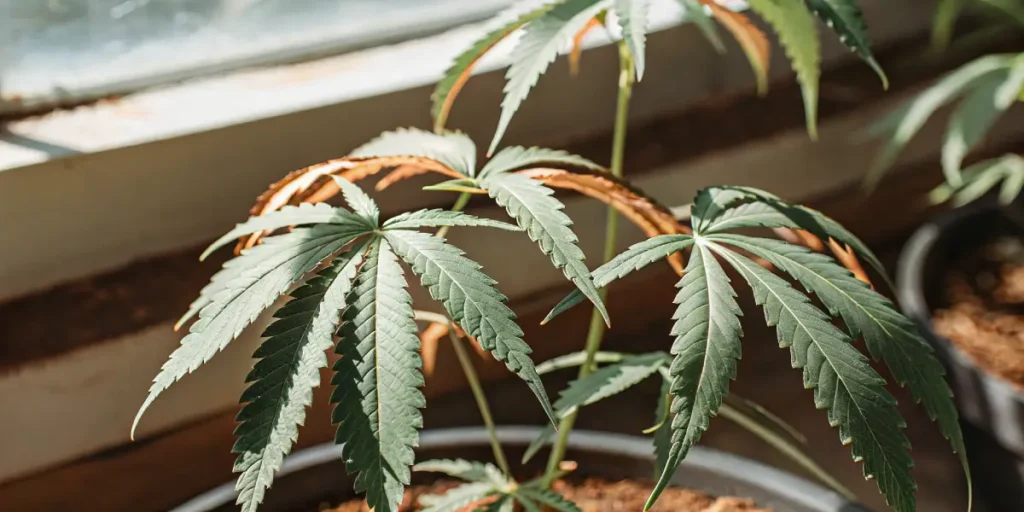
Prevention Tips for Cannabis Plant Leaves Wilting
Preventing wilting involves a proactive approach. Regularly inspect your plants for early signs of stress. Leaf color and texture changes often indicate potential problems. Catching these early allows for swift intervention, minimizing damage.
Invest in quality equipment to monitor and maintain your grow environment. Thermometers, hygrometers, and pH meters are invaluable tools for any serious grower. They provide real-time data, enabling informed decisions and adjustments to your setup.
One effective prevention strategy is to establish a routine maintenance schedule that includes checking for pests, fungi, and other potential threats to plant health. Early detection and treatment are crucial in preventing cannabis plant leaves wilting and ensuring a robust growing season.
Moreover, incorporating beneficial microbes into your soil can enhance root health and nutrient uptake efficiency. Products like mycorrhizal fungi and beneficial bacteria can create a thriving root zone, reducing the risk of nutrient deficiencies and subsequent leaf curling and wilting.
Choose strains known for their hardiness, such as Critical Daddy Purple. This strain is praised for its resilience and ability to thrive in various conditions, making it ideal for growers aiming to minimize leaf issues.
Nutrients Deficiency Causing Cannabis Leaves to Wilt
Nutrient deficiencies are a common cause of cannabis leaves wilting. Each nutrient plays a unique role in plant health, so a deficiency can severely impact growth. For example, nitrogen is crucial for leaf development, while potassium impacts water uptake and overall vigor.
To prevent deficiencies, use a balanced nutrient solution tailored to cannabis. Regularly test your soil or hydroponic solution to ensure nutrient levels are appropriate. A soil test kit or a hydroponic nutrient meter can provide accurate readings, helping you adjust as needed.
Iron deficiency is another potential issue that can cause cannabis leaves to wilt. This deficiency often manifests as interveinal chlorosis, where the leaves turn yellow while veins remain green. Ensuring an adequate supply of micro-nutrients can prevent such problems and maintain healthy leaf coloration.
Moreover, magnesium plays a vital role in chlorophyll production. A lack of magnesium can lead to interveinal yellowing and weak plant structure. Regular supplementation with a magnesium-rich fertilizer can prevent these symptoms and promote robust leaf health.
Sometimes, deficiencies are a result of pH imbalances, which block nutrient uptake. Ensure your growing medium’s pH is within the ideal range—around 6.0-6.8 for soil and 5.5-6.5 for hydroponics. Regular monitoring can prevent long-term nutrient issues.
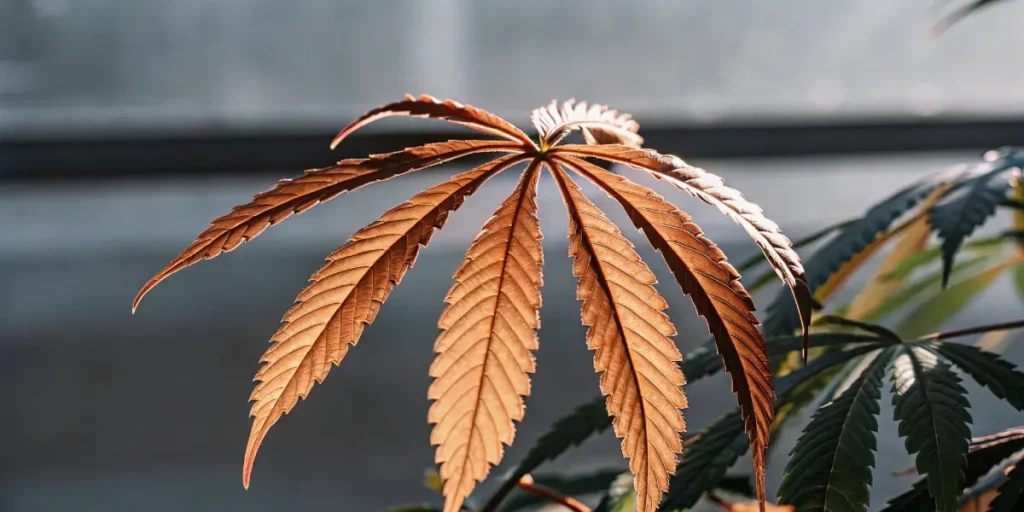
FAQs
What causes cannabis leaf curling and wilting?
Cannabis leaf curling and wilting can be due to several factors, including environmental stress and nutrient imbalances. Environmental stress often arises from incorrect temperature, humidity, or light intensity. For instance, a grow room that’s too hot can cause leaves to curl as they attempt to conserve moisture.
Nutrient issues, such as deficiencies or toxicities, are another common cause. A plant not receiving enough essential nutrients like nitrogen or potassium will show stress through its leaves. Over-fertilization can also lead to nutrient burn, causing the tips of the leaves to curl and wilt.
Besides to these factors, genetic predispositions can also play a role in cannabis leaf curling and wilting. Some strains are more susceptible to environmental and nutrient stresses, which highlights the importance of selecting strains suitable for your specific growing conditions.
Root-bound plants, often resulting from prolonged growth in small containers, can exhibit symptoms of stress, including leaf curling and wilting. Regularly transplanting your plants into appropriate-sized pots can prevent root binding and support healthy leaf development.
How do I treat curling cannabis leaves?
Treatment involves identifying and addressing the underlying issue. For environmental stress, adjust your grow room settings to the optimal range for your cannabis strain. Ensure your plants are not too close to light sources and that the grow room has adequate ventilation.
If the issue is nutrient-related, ensure you are providing a balanced feed. Regularly check the pH of your growing medium to prevent nutrient lockout. Make gradual adjustments to avoid stressing the plants further.
Using foliar sprays can be an effective way to deliver nutrients directly to the leaves, especially if nutrient uptake through the roots is compromised. Ensure the spray is applied during the cooler parts of the day to prevent leaf burn from intense light.
In cases where pests are the cause, applying an organic insecticide or introducing beneficial insects can help manage the pest population and restore plant health. Consistent monitoring and timely intervention are key to preventing further damage.
Can certain cannabis strains resist leaf curling and wilting?
Yes, some cannabis strains are more resilient to stress and less prone to leaf curling and wilting. Strains like Auto Gorilla Glue and Critical Daddy Purple are known for their robust health and adaptability to various growing conditions.
Choosing a strain with a reputation for resilience can save time and reduce the likelihood of stress-induced leaf issues. Always research and select strains that suit your growing environment and experience level.
Additionally, strains with indica genetics often exhibit a greater tolerance to environmental fluctuations, making them ideal for less controlled growing environments. Their hardy nature can reduce the incidence of cannabis leaf curling and wilting.
Sativa-dominant strains, while typically requiring more precise environmental conditions, can offer robust growth and resilience when provided with the ideal settings. Knowing the genetic background of your strain can guide your cultivation practices effectively.
What environmental factors affect cannabis leaf health?
Temperature, humidity, and light are the primary environmental factors affecting cannabis leaf health. Keeping your grow room within the ideal temperature range of 70-85°F helps prevent stress. Humidity should match the plant’s growth stage, with vegetative plants needing more moisture than flowering ones.
Light intensity must be balanced. Too much light can scorch leaves, while too little can lead to wilting. Adjust your grow lights based on the plant’s stage and ensure even light distribution across your canopy.
Soil composition and water quality are additional factors that can influence cannabis leaf health. Ensuring your soil is rich in organic matter and free from contaminants can support strong growth. Likewise, using purified water can prevent chemical build-up and nutrient lockout.
Barometric pressure changes can also impact plant growth. Sudden drops in pressure, often associated with stormy weather, can stress plants and lead to temporary wilting. While this is usually not a long-term issue, maintaining stable indoor conditions can mitigate its effects.
How can I prevent cannabis plant leaves from wilting?
Prevention is key to maintaining healthy cannabis plants. Regularly inspect your plants for early signs of stress, such as changes in leaf color or texture. These signs can indicate potential problems that require attention.
Maintaining a stable grow environment with the right equipment is essential. Thermometers, hygrometers, and pH meters help you monitor conditions and make necessary adjustments. Choosing resilient strains also reduces the risk of wilting and promotes overall plant health.
Implementing a consistent watering schedule tailored to your plant’s needs can effectively prevent root-related issues. Overwatering is a common mistake that leads to root rot and subsequent wilting, so allowing the soil to dry out slightly between waterings is advisable.
Incorporating companion planting techniques can also enhance plant health. Certain plants can deter pests naturally or improve soil quality, contributing to an environment that minimizes cannabis plant leaves wilting and supports overall vitality.

